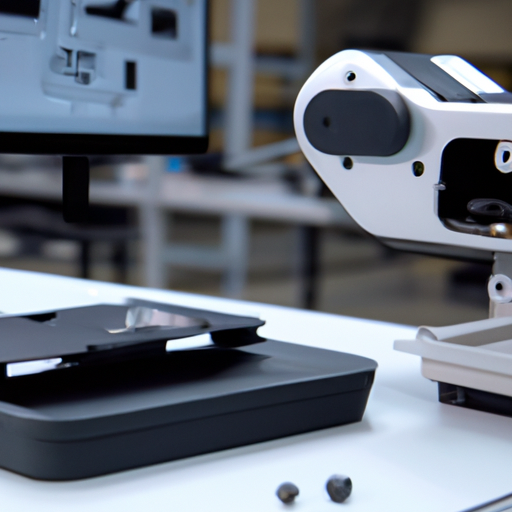The Art of Critical Thinking: How to Identify Areas for Improvement in Your Business
- michael
- May 9, 2023
In today’s rapidly evolving business environment, it is essential for businesses to continuously identify and address areas for improvement. Critical thinking is a key skill that can help businesses identify challenges and opportunities for growth, and develop effective solutions to address them. In this article, we will explore the art of critical thinking and how businesses can use it to identify areas for improvement.
1. Define the Problem
The first step in critical thinking is to define the problem clearly and accurately. This involves identifying the specific issue that needs to be addressed, and understanding its scope and impact on the business. Defining the problem is essential for developing
effective solutions that address the root cause of the issue.
2. Gather Information
Once the problem has been defined, it is important to gather information to understand the root causes and contributing factors. This may involve conducting research, analyzing data,
and interviewing stakeholders. Gathering information can help to identify patterns and trends, and provide insights into potential solutions.
3. Analyze and Evaluate Information
After gathering information, it is important to analyze and evaluate it objectively. This involves considering all relevant factors and weighing the pros and cons of potential solutions. By approaching the evaluation process objectively, businesses can identify the most effective solutions to address the problem.
4. Develop Solutions
Once potential solutions have been identified, it is important to develop them into actionable plans. This may involve developing an action plan, setting goals and milestones, and allocating resources as needed. Effective solution development is key to ensuring that the problem is addressed effectively and efficiently.
5. Implement and Monitor Solutions
After a solution has been developed, it is important to implement it effectively and monitor its progress. This may involve communicating the plan to stakeholders, tracking progress against goals and milestones, and adjusting the plan as needed. Effective implementation and monitoring are key to ensuring that the solution achieves the desired results.
Example: A manufacturing company may use critical thinking to identify areas for improvement in their production process. By defining the problem, gathering information, analyzing and evaluating information, developing solutions, and implementing and monitoring solutions, the company may be able to identify areas for streamlining production processes, reducing costs, and improving product quality.
6. Seek External Perspectives
It can be helpful to seek external perspectives when trying to identify areas for improvement in your business. This can come in the form of outside consultants, industry experts, or even customers. Seeking feedback from individuals outside of your organization can provide a fresh perspective and new insights that may not have been considered before.
7. Foster a Culture of Continuous Improvement
In order to truly embrace the art of critical thinking, it is important to foster a culture of continuous improvement within your organization. This means encouraging employees to question the status quo, experiment with new ideas, and share their insights and feedback. By creating a culture of continuous improvement, businesses can stay agile and adapt to changing market conditions.
8. Measure and Track Progress
In order to ensure that your efforts to identify areas for improvement are effective, it is important to measure and track progress over time. This means setting measurable goals and objectives, tracking progress against those goals, and adjusting strategies as needed. By measuring and tracking progress, businesses can ensure that they are making tangible progress towards their goals.
9. Celebrate Successes
Finally, it is important to celebrate successes along the way. Identifying areas for improvement and developing effective solutions can be a challenging process, so it is important to take the time to recognize and celebrate the successes that result from these efforts. This can help to build momentum and keep employees motivated and engaged in the process of continuous improvement.
Example: A software company may use critical thinking to identify areas for improvement in their customer support processes. By seeking external perspectives, fostering a culture
of continuous improvement, measuring and tracking progress, and celebrating successes, the company may be able to identify new ways to streamline support processes, improve customer satisfaction, and reduce support costs.
Conclusion
In conclusion, the art of critical thinking is a powerful tool for identifying areas for improvement in any business. By defining the problem, gathering information, analyzing and evaluating information, developing solutions, implementing and monitoring solutions, seeking external perspectives, fostering a culture of continuous improvement, measuring and tracking progress, and celebrating successes, businesses can drive growth and success in their operations. By cultivating a culture of critical thinking and continuous improvement, businesses can stay agile and adaptable in today’s fast-paced businessenvironment.
In conclusion, critical thinking is a critical skill for identifying areas for improvement in any business. By defining the problem, gathering information, analyzing and evaluating information, developing solutions, and implementing and monitoring solutions, businessescan identify challenges and opportunities for growth, and develop effective solutions to address them. By cultivating a culture of critical thinking and continuous improvement, businesses can stay agile and adaptable in today’s fast-paced business environment.

Robotic Process Automation
Blog Categories
Feel free to get in touch with our experts.
Other articles
Emerging Chatbot Trends: AI Technology, NLP, Sentiment Analysis & Multi-Language Support for Customer Support
Enhancing healthcare through intelligent conversation. Enhancing Mental Health Support and...
Read MoreHow to Get Started with AI and RPA
Introduction to AI and RPA: A Beginner’s Guide Artificial Intelligence...
Read MoreAI and RPA for Customer Service
The Impact of AI and RPA on Customer Service: Enhancing...
Read More


